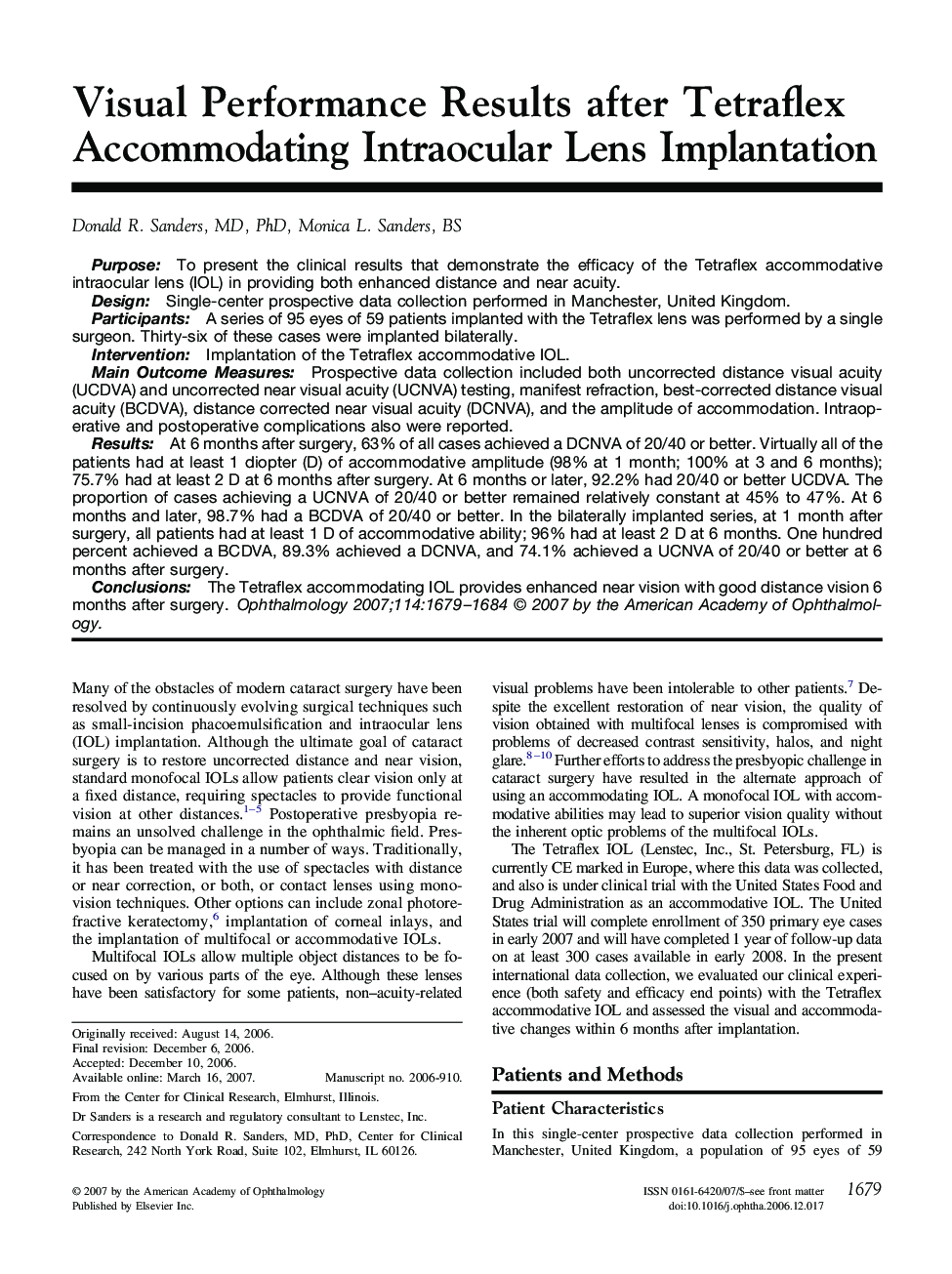| Article ID | Journal | Published Year | Pages | File Type |
|---|---|---|---|---|
| 4029202 | Ophthalmology | 2007 | 6 Pages |
PurposeTo present the clinical results that demonstrate the efficacy of the Tetraflex accommodative intraocular lens (IOL) in providing both enhanced distance and near acuity.DesignSingle-center prospective data collection performed in Manchester, United Kingdom.ParticipantsA series of 95 eyes of 59 patients implanted with the Tetraflex lens was performed by a single surgeon. Thirty-six of these cases were implanted bilaterally.InterventionImplantation of the Tetraflex accommodative IOL.Main Outcome MeasuresProspective data collection included both uncorrected distance visual acuity (UCDVA) and uncorrected near visual acuity (UCNVA) testing, manifest refraction, best-corrected distance visual acuity (BCDVA), distance corrected near visual acuity (DCNVA), and the amplitude of accommodation. Intraoperative and postoperative complications also were reported.ResultsAt 6 months after surgery, 63% of all cases achieved a DCNVA of 20/40 or better. Virtually all of the patients had at least 1 diopter (D) of accommodative amplitude (98% at 1 month; 100% at 3 and 6 months); 75.7% had at least 2 D at 6 months after surgery. At 6 months or later, 92.2% had 20/40 or better UCDVA. The proportion of cases achieving a UCNVA of 20/40 or better remained relatively constant at 45% to 47%. At 6 months and later, 98.7% had a BCDVA of 20/40 or better. In the bilaterally implanted series, at 1 month after surgery, all patients had at least 1 D of accommodative ability; 96% had at least 2 D at 6 months. One hundred percent achieved a BCDVA, 89.3% achieved a DCNVA, and 74.1% achieved a UCNVA of 20/40 or better at 6 months after surgery.ConclusionsThe Tetraflex accommodating IOL provides enhanced near vision with good distance vision 6 months after surgery.
